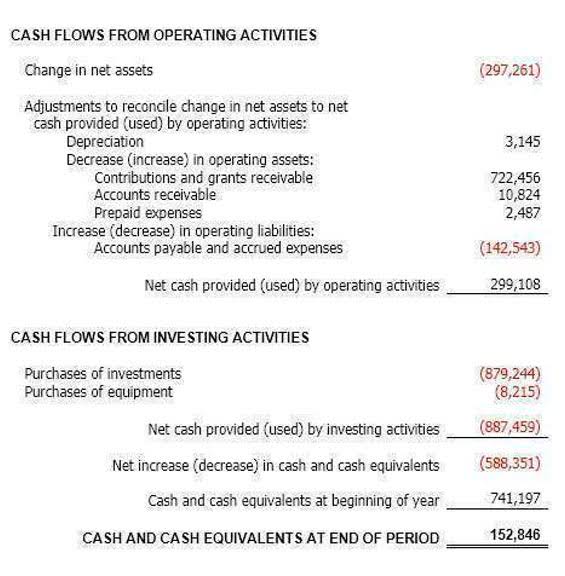He has been a manager and an auditor with Deloitte, a big 4 accountancy firm, and holds a degree from Loughborough University. Danielle Bauter has 25 years of experience as a Full-Charge Bookkeeper and has owned her own bookkeeping and payroll service for over two decades, working with various accounting software. These are all cash sales, and the total COGS under the FIFO method is $32,000. A perpetual system offers tremendous value to any retail business—but not every retail business needs one (yet).
Under this system, the stock turnover ratio, which is the key measure for assessing the effectiveness of business owners in managing inventory, is calculated recourse vs non-recourse commercial loans accurately. It gives business owners a more accurate picture of the customer preferences. The perpetual inventory system involves the continuous updating of inventory records. These updates include sales and purchases through computerized point-of-sale systems and enterprise asset management software.
Comparing Perpetual and Periodic Systems
A perpetual inventory system continuously tracks inventory levels, enabling businesses to manage stock more effectively. This method improves accuracy and supports better decision-making in purchasing and sales strategies. Understanding its functionality can help businesses streamline processes and enhance efficiency. With a periodic inventory system, you don’t have much insight into your inventory balance throughout the accounting period. The inventory balance only gets adjusted once the manual physical counts are completed.
Start-up businesses that cannot afford the cost of technology and training might also fall back on the periodic inventory system. If you’re using a Retail POS with robust data and reporting features, it’s not just your inventory levels that will update automatically—so will your POS reports. From top sellers to low stock reports, to sell through rates and dusty inventory reports, powerful, real-time reporting empowers retailers with inventory insights that go far beyond what they have on hand. Efficient inventory management is the backbone of any successful retail operation. It ensures products are available when customers are ready to buy them, prevents overstocking and reduces waste. The Weighted Average Cost method calculates inventory cost based on the average cost of all available stock.
- Businesses with high sales volume, multi-location operations, or online stores benefit the most from a perpetual inventory system.
- You must choose between a periodic inventory system and a perpetual inventory system.
- The inventory balance only gets adjusted once the manual physical counts are completed.
- It would help if you were aware of the selling price, the purchasing price, and the affected accounts to record transactions in a perpetual system.
- On the other hand, detractors don’t necessarily note that reported stockouts without corresponding sales can signal theft or loss and trigger a physical inventory check faster than with a periodic system.
- Driven by a point-of-sale system (POS), a perpetual inventory counting system automatically updates your inventory levels using sales data.
Select the best approach for your business, and then research to support your choice. The database subtracts one of these products from its count each time a consumer purchases one. The store manager can check the database any time to see how much of that product is currently in stock and whether more needs to be ordered.
Challenge – Initial setup and operational costs can be high, especially for small businesses. Solution – Start with scalable systems that align with your business size and growth trajectory. Budget for software licensing, hardware procurement, and ongoing maintenance. Evaluate the long-term ROI, such as reduced stockouts and improved operational efficiency. Below is a break down of subject weightings in the FMVA® financial analyst program.
However, businesses must evaluate their specific needs and choose the right tools to support their operations. Regular maintenance and monitoring are crucial to ensure its long-term success. Technology integration in perpetual inventory systems has revolutionized inventory management. Advanced software platforms like Oracle NetSuite and SAP Business One automate inventory tracking, streamlining operations and reducing errors. By utilizing barcode scanning and RFID technology, businesses achieve real-time visibility of stock levels, ensuring reliable and up-to-date inventory data. A perpetual inventory system is an advanced method of tracking and managing the stock levels of goods in real time.
Company
In a perpetual inventory system, inventory is recorded any time inventory is purchased and received by a merchant or sold to customer. Inventory levels are then either increased or decreased to reflect the changes in real-time, so inventory counts are constantly being adjusted. As an expert fulfillment partner, ShipBob’s technology features built-in perpetual inventory management capabilities. Through ShipBob’s dashboard, ecommerce brands can achieve real-time visibility into inventory levels and track SKUs as they are received, stowed, picked, packed, and shipped to customers.
- Start-up businesses that cannot afford the cost of technology and training might also fall back on the periodic inventory system.
- One key trend is the integration of AI and machine learning, which enhances inventory forecasting and decision-making.
- Purchase Order Syncing – When new stock arrives, it’s scanned and added to the inventory database.
- It ensures products are available when customers are ready to buy them, prevents overstocking and reduces waste.
- Because you never know when the next TikTok-fueled Stanley Cup Craze will clear out your entire season’s worth of inventory in the blink of an eye.
- By applying a consistent average cost to all units sold and remaining in inventory, this method simplifies accounting processes.
Double Entry Bookkeeping
By examining these aspects, we can better understand their impact on financial statements and compare them with periodic systems. The primary issue that companies face under the periodic inventory system is the fact that inventory information is not up to date and may be unreliable. This means that managers don’t have accurate demand forecasts or inventory levels to ensure that stockouts don’t occur. A perpetual inventory system maintains a continuous tally of transactions, making the COGS available at any time. By contrast, a periodic inventory system calculates the COGS only after conducting a physical inventory. Because perpetual inventory systems lack the ability to account for loss, breakage, or theft, a periodic (physical) inventory can still be necessary.
Calculating Cost of Goods Sold
A perpetual inventory system is a game-changer for businesses looking to maintain real-time inventory control, minimize stock discrepancies, and streamline their supply chain operations. By continuously updating stock levels and integrating with essential business tools, this system ensures businesses operate more efficiently and make data-driven decisions. A defining feature of the perpetual inventory system is its ability to record transactions in real-time, providing businesses with a dynamic view of inventory. Using technologies like barcode scanners and RFID tags, inventory records are updated automatically as purchases and sales occur.
In a perpetual inventory system, journal entries are essential for maintaining accurate financial records. When a purchase is made, the Inventory account is debited while the Accounts Payable or Cash account is credited, depending on the payment method. Instead of waiting for data from a manual inventory count to come in, business owners can check inventory records and generate reports that inform decisions in real time. This purchase transaction triggers another journal entry, this time only on your balance sheet. In this example, a total of $1,500 (500 units x $3.00 each) should be recorded as a debit to inventory, and a credit to either accounts payable or cash.
Recording Sales on Account
Large companies or those with complex inventories are well suited to a perpetual system. Smaller companies with limited inventory can often survive with a periodic system. The same applies to the margin for error, which is lower with a perpetual system, although a limited, uncomplicated inventory may not suffer much with a periodic system. Continuing the example above, we’ll assume that the COGS for each vanilla-scented candle (which factors in expenses like raw materials, warehouse labor, and overhead expenses) is $5.00 per unit. Every time a candle is scanned, $5.00 is added to your business’s overall COGS — meaning that after scanning 3 candles, the COGS increased by $15.00. Below are some of accounting methods changes the most frequently asked questions about using a perpetual inventory system.
Step 3: Reorder points are adjusted frequently
Global industry leaders favor the perpetual inventory system as their preferred accounting technique. If your business can manage the initial fees, get the right software, and keep the system error-free. It is unquestionably the better way for accounting and inventory management. When dealing with inventory accounting, you’ll likely find yourself journalizing transactions. Below you’ll find some of the most common journal entries you’ll need, to do accounting for your inventory.
Recording Cash Sales
Perpetual inventory systems offer a powerful tool for businesses seeking to streamline operations and gain a competitive edge. By providing real-time data and automating tasks, these systems can significantly improve inventory accuracy, reduce stockouts and overstocking, and boost profitability. A perpetual inventory system is a method of continuously tracking inventory levels and transactions loses record amount in its year in real time.
Inciflo’s user-friendly, automated perpetual inventory solution helps companies streamline operations, minimize errors, and enhance customer satisfaction. Whether you’re a small business or a large enterprise, Inciflo makes perpetual inventory management accessible and effective. It updates your inventory in real time, so you always know exactly what’s in stock. No more guessing, no more surprises—just accurate inventory tracking that helps your business run smoothly. Invest in robust inventory management software with real-time tracking capabilities.
Inciflo’s perpetual inventory system provides businesses with real-time stock visibility, ensuring smarter inventory decisions and seamless operations. Inventory tracking in a perpetual system uses technologies like barcoding, RFID, and ERP integration. The platform automates the process, capturing data as items are received, transferred, or shipped, ensuring stock levels are always accurate.
When a warehouse picker picks each unit, the picker scans each candle’s barcode. As soon as each barcode is scanned, your perpetual inventory system’s software decreases the overall inventory count for that SKU by 3. You need enough inventory in stock to keep up with customer demand, but not so much that you are overpaying on storage costs. That’s why it’s crucial to have an inventory system in place, so you know exactly how much inventory you have at any given time. Ultimately, businesses should carefully assess their specific needs and challenges to determine whether a perpetual inventory system is the right choice. It helps maintain good accounting standards by automating billing, invoicing, and payment processing tasks.










